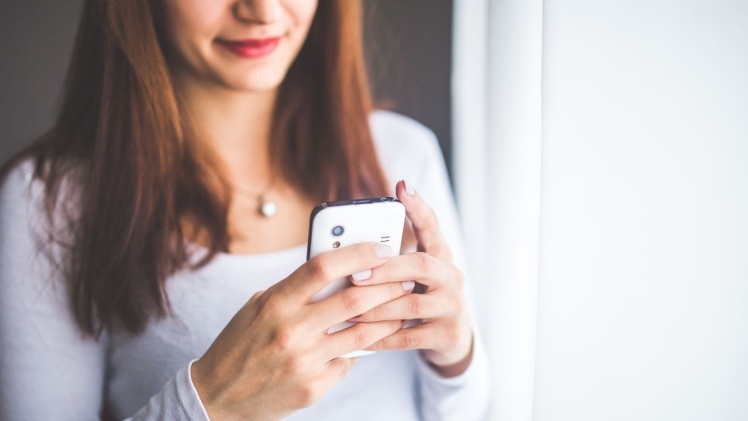You can get a discount on your home landline wi, wireless phone, or internet service through the federal Lifeline program. It’s based on income and participation in government assistance programs.
How to Apply
In most states, the federal Lifeline program offers a subsidy on phone service. The subsidy is provided to eligible low-income consumers. The phone subsidy is available through authorized providers or carriers approved by the Universal Service Administrative Company (USAC). These authorized providers offer low-cost telecommunications plans and services to eligible customers. These include wireless and landline phones and home and broadband Internet services. The Lifeline program is administered by USAC, which helps consumers apply for the benefit and understand eligibility requirements. The company also conducts annual recertification to ensure beneficiaries remain eligible for the program.
Your household income must be at or below 135% of the federal poverty guidelines to be eligible for the program. If any member of your household receives government assistance through programs like Supplemental Security Income, Apple Health (Medicaid), or SNAP, you may also be eligible. Additionally, you must present identification documentation, like a driver’s license or state ID card with your name, birth date, and the final four digits of your Social Security number.
You can submit the required documentation online through the national verifier application system. This system, which USAC operates, eliminates the need for paper-based documents because it directly links to federal databases containing information on income and benefits. If you cannot complete the national verifier application system, you can submit your verification documents by mail to your provider. Your provider will keep these documents confidential and secure; sharing them with anyone else is against the law.
Documents You Need to Send
Providing the correct documentation is essential to your application. Your service provider will review and securely retain all documents you send, including income verification and proof of participation in a qualifying program. Federal law prevents your provider from sharing these documents with unauthorized individuals.
The Lifeline phone program is only available through authorized service providers, also known as carriers. These companies have partnered with the FCC to provide low-cost telecommunications services for eligible participants. Many companies offer free wireless phones, home phone service, and bundled internet/phone plans.
Your household must participate in qualified assistance programs (such as Medicaid or SNAP) and have a total annual income at or below 135% of the federal poverty guidelines to be eligible for the program. Your household can only have one phone account from an authorized carrier per household.
It would help if you recertified your eligibility annually, or your Lifeline phone service will be deactivated. You must submit an annual proof-of-eligibility document to your service provider to do this. You can complete a paper recertification form or meet it online by contacting the customer service number of your Lifeline provider. You’ll receive a notification letter, robocall, and a reminder postcard from USAC to inform you when to recertify and the method. Your Lifeline phone benefit will expire after 60 days if you don’t recertify.
Contacting Your Service Provider
Contact your service provider directly with any inquiries concerning the application procedure. They can provide more information on the documents they need and whether your income meets the federal poverty guidelines. Remember always to send copies of any proof you submit, not originals. If you do, you could retain your Lifeline discount or even be punished for submitting false documentation.
If your household qualifies for the program, you can receive a monthly discount on either landline or wireless phone services or bundled voice and broadband. If you live on tribal lands, you may also be eligible for the Affordable Connectivity Program (ACP), which offers a one-time discount on an internet-capable device.
Keep in mind that you can only get Lifeline on one line per household, so if you’re considering getting a discount for a second wireless line, make sure you know whether your household has someone who needs access to a teletypewriter/text telephone device or TTY/TDD. It is also essential to consider long-distance and local call rates and optional features like caller ID, call waiting, and voicemail.
Final Words
In today’s digital age, staying connected is more important than ever. Low-income families and individuals can keep in touch with their loved ones using the Lifeline Assistance program. They can also avoid falling behind on their bills and maintain competitiveness in the job market. One of the top providers of Lifeline cell phone plans gives away free phones to qualified users.
Lifeline is available to eligible consumers in all 50 states and the District of Columbia. The program provides monthly support for voice services and broadband internet access, and the federal government covers the cost of a basic smartphone or an older model for those who don’t have a smartphone. The government also discounts home security systems and installation assistance for some rural regions.
The Universal Service Administrative Company, or USAC, oversees the Lifeline program. The company is responsible for conducting Beneficiary and Contributor Audit Program (BCAP) audits and payment quality assurance reviews. It also manages the nationwide verification system. It also conducts risk-based audits for ETCs that receive $5 million or more in reimbursements from the program.
Regarding whether to restrict the practice of Lifeline ETCs giving away free handsets in person, the FCC is currently accepting comments. This practice has been linked to reports of ineligible people enrolling in the program. Additionally, the agency wants to know if it would be possible to request ETCs to charge a device fee or impose a monthly service fee for Lifeline subscribers.


